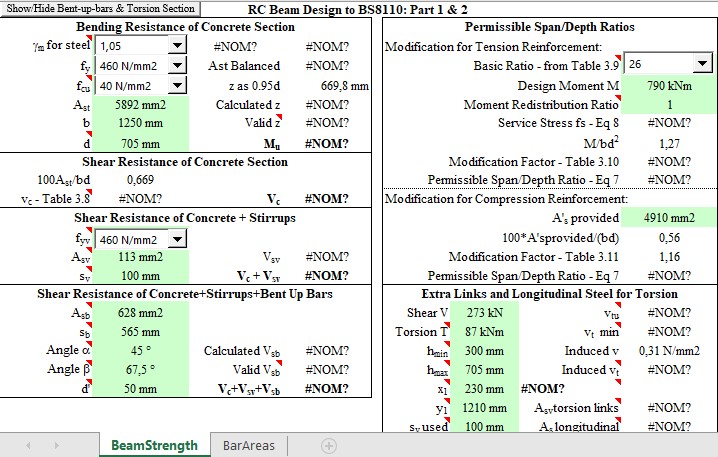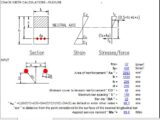
RC Beam Design and Calculation to BS8110 Spreadsheet
10 December 2022RC Beam Design and Calculation to BS8110 Spreadsheet
Reinforced Concrete (RC) beams are a fundamental component in modern construction, known for their strength, durability, and versatility. Whether you’re constructing residential buildings, commercial spaces, or bridges, RC beams play a crucial role in ensuring structural integrity. This article delves into the basics of RC beams, their importance, types, and applications in construction.
What is an RC Beam?
An RC beam is a horizontal structural element made of reinforced concrete that resists bending and shear forces. It is designed to support loads from walls, floors, and ceilings and transfer them to the columns and foundations. The reinforcement, typically steel bars, enhances the tensile strength of the concrete, making it a perfect material for load-bearing applications.
Why Are RC Beams Essential in Construction?
- Strength and Durability
- Concrete provides compressive strength, while steel reinforcement adds tensile strength, resulting in a robust and durable beam.
- Versatility
- RC beams can be molded into various shapes and sizes, catering to diverse architectural and structural needs.
- Cost-Effectiveness
- The materials used in RC beams—cement, aggregates, and steel—are widely available, making them an economical choice for construction.
- Fire Resistance
- Concrete’s inherent fire-resistant properties make RC beams a safe option for buildings.
- Load Distribution
- RC beams efficiently distribute loads, ensuring stability and minimizing the risk of structural failure.
Types of RC Beams
- Simply Supported Beam
- Supported at both ends, with the load applied between the supports. Commonly used in residential and commercial buildings.
- Cantilever Beam
- Fixed at one end while free at the other. Ideal for balconies, overhangs, and projections.
- Continuous Beam
- Extends over multiple supports, offering better load distribution and reduced bending moments.
- T-Beam
- Combines a rectangular beam and slab, providing additional strength and reducing the need for extensive reinforcement.
- L-Beam
- Used at the edges of slabs to manage edge stresses effectively.
- Double Reinforced Beam
- Reinforced on both tension and compression sides, suitable for situations with high bending moments.
Applications of RC Beams in Construction
- Residential Buildings: Support floors and ceilings, ensuring stability and load transfer.
- Commercial Structures: Handle heavy loads in office buildings, malls, and warehouses.
- Bridges: Form the core structural elements, bearing dynamic and static loads.
- Industrial Facilities: Provide support for heavy machinery and equipment.
- High-Rise Buildings: Essential for managing complex load paths in skyscrapers.
Design Considerations for RC Beams
- Material Strength: Ensure the concrete and steel meet the required strength specifications.
- Load Analysis: Accurately calculate the loads, including live, dead, and environmental loads.
- Beam Dimensions: Design appropriate width, depth, and span for effective load-bearing.
- Reinforcement Detailing: Proper placement and anchoring of steel bars are critical for structural performance.
- Building Codes: Adhere to local and international construction standards for safety and durability.
RC Beams and Sustainable Construction
As the construction industry embraces sustainability, RC beams can incorporate eco-friendly materials such as recycled aggregates and low-carbon concrete. Using advanced construction techniques, such as precast RC beams, also reduces waste and improves efficiency.
Conclusion
RC beams are indispensable in modern construction, offering unparalleled strength, durability, and adaptability. From residential homes to monumental bridges, their role in ensuring structural integrity cannot be overstated. By understanding their types, applications, and design principles, construction professionals can leverage the full potential of RC beams to build safe and efficient structures.


